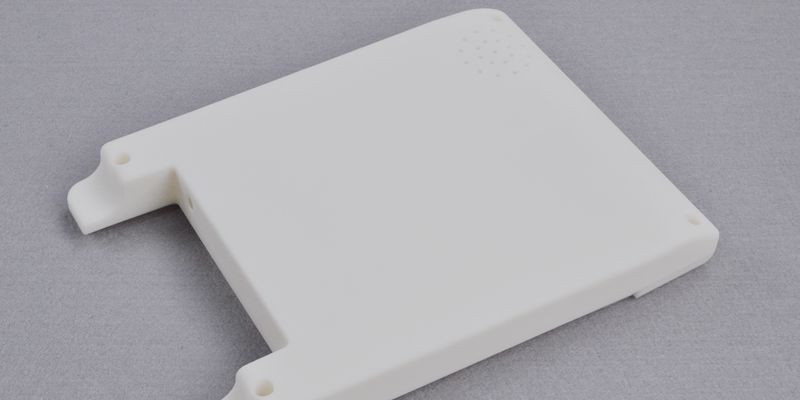- August 23, 2022
The additive manufacturing industry, valued at an astounding $13.84 billion, is among the fastest-growing manufacturing technologies of the modern era. Selective Laser Sintering (SLS) is one of the innovative 3D printing technologies that has fueled its swift rise and inspired wide-scale industrial adaptation.
In this comprehensive guide, we will discuss various aspects of SLS printing, including its workflow, advantages/disadvantages, material capabilities, and some of its applications.
What is Selective Laser Sintering 3D Printing?
SLS 3D printing utilizes a guided laser as a heat energy source to sinter layers of raw material particles into a strong, durable build. The particles, when heated, coalesce together without melting. This is why it is referred to as a sintering process, not melting.
Also, SLS 3D printers come in a variety of build volumes ranging from desktop to large-scale industrial. They also differ in factors like laser type (fiber, diode, CO2 lasers, etc.), laser power, cost, and manufacturing accuracy.
This technique is known for its viability for manufacturing functional parts and rapid prototyping. The desirable material qualities of SLS 3D printer parts are a promising factor for manufacturers and product developers.
Let’s dive deeper into selective laser sintering and break down its workflow for a better understanding.
Workflow of SLS 3D Printing
SLS 3D printing is performed in numerous steps. Described below is a step-by-step procedure standard for most SLS 3D printers.
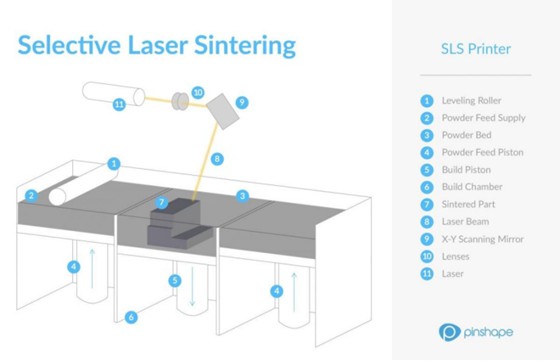
1. CAD Model Preparation
The story starts with a CAD model of the part to be printed. The finalized model is transferred to the SLS printers’ in-built user interface or a slicing software in file formats suitable for 3D printing. The most common file format is STL.
The slicing software prepares the CAD file for 3D printing, generating commands (known as G-Codes) that the printer’s controller can interpret in terms of the scanning motion of the laser. The software also incorporates user-defined settings such as layer thickness, laser power, and resolution that are defining factors for the final build quality.
At this stage, the software also predicts crucial information such as print time and material consumption.
2. Pre-Print Checks
SLS 3D printers are sophisticated machines that require training and care to operate. Before the printing begins, some checks are performed to ensure the printing goes smoothly.
The build chamber (powder bed) is filled to the correct level and with the correct material. In addition, professional operators also perform some preprint CAD checks to make sure there are no loopholes that affect printability.
The galvanometers, the mirrors that direct the laser beam along the desired printing path, must be calibrated. The servomotors that actuate them are brought to their home positions as well for minimal errors. Calibration schedules for these are often recommended by manufacturers in handbooks.
3. Preheating Powder
The powder in the build chamber is preheated before the printing begins to just below its melting point. This way the laser’s heat energy is only used in sintering. This allows for quick 3D printing.
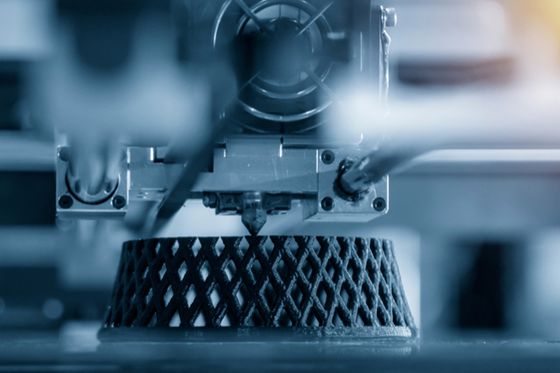
4. Printing
Actually, the printing process itself is quite simple and ingenious. The laser scans the top layer of the part (defined earlier by the slicer) over the top surface of the powder bed.
The laser power is set precisely to achieve a sintering depth equivalent to the layer thickness. The typical range of layer thickness in SLS 3D printing is 0.05-0.15mm.
Then, the bed moves down by a thickness of one layer, taking the build with it. A fresh layer of the SLS material is spread over the bed by the recoating blade/roller. The laser scans the second layer this time, which joins with the previous one.
This process then keeps repeating until the entire part is printed.
5. Part Recovery & Post-Processing
After the print is complete, it is allowed to cool down inside the chamber for some time. Once it is cool, it is extracted from the build chamber. Since the part is surrounded on all sides by the un-sintered powder, the extraction process is oftentimes referred to as “depowdering”.
Advantages of SLS 3D Printing
SLS 3D printing boasts numerous positives, making it one of the most sought-after additive manufacturing methods in industrial.
1. Robust Parts
SLS 3D printed parts possess advantageous properties such as mechanical strength, tensile modulus, heat resistance, and water and air-tightness. This is due to the sintering process, which strongly bonds together the individual polymer particles.
This quality of robustness has allowed SLS printers to be a piece of common equipment for developing and testing functional prototypes, which not only mimic the test product’s appearance but also its functionality.
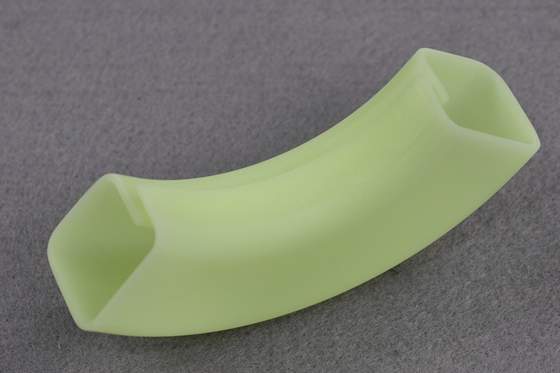
2. No Supports Required
3D printed structures with features like overhangs or bridges require supporting geometry to uphold these elements during printing. Most 3D printing methods, like FDM, waste a lot of time and material printing these supporting structures.
With selective laser sintering, however, this is not a concern. Since the entire build is entrapped in a pool of loose powder, it is already well-supported during the build. Not only is this time-saving but it also decreases costs.
3. Quick
These machines are considered fast 3D printers, with commercial printing, speeds up to 48 mm/hr. This beats a decent number of alternative 3D printing methods.
In addition to this, the workflow of this process, while divided into many steps, is quite time-efficient. The laser scanning is near-instantaneous, the build chamber can be detached and replaced with another one as the first one cools down, and there is also the possibility of batch printing, which we discuss next.
4. Batch Printing
3D printers come in a variety of build chamber volumes, with up to 750mm in one direction for bigger machines. A productive approach is to make efficient use of the build chamber volume by adapting batch printing.
This means to fit as many parts inside the build chamber, as a ‘batch’. This is prudent since the laser scanning itself is very quick. In batch printing, with one scan, it can sinter layers of multiple parts rather than just one, saving hours in printing time.
5. High Dimensional Accuracy
SLS produces very accurate parts. As mentioned before, the layer height can be as low as 0.05mm. On top of this, most 3D printers are capable of manufacturing tolerances within +/- 3%. The packing pressure provided by the powder bed also helps in minimizing warpage.
Owing to this, SLS 3D printed parts are near-net shape and do not require extensive post-processing.
Disadvantages of SLS 3D Printing
Like any manufacturing process, SLS has its cons in addition to pros. We shed light on some points one must keep in mind before opting for SLS.
1. Limited Raw Material Options
Selective laser sintering does not offer a strong catalog of materials. Apart from a few types of Nylon, thermoplastic elastomers, and TPU (Thermoplastic Polyurethane), materials compatible with SLS are a bit hard to come by. Physical appearance is also limited to greyish, metallic finishes.
While scientific research is expanding the material scope of SLS printing, it is a clear disadvantage for now.
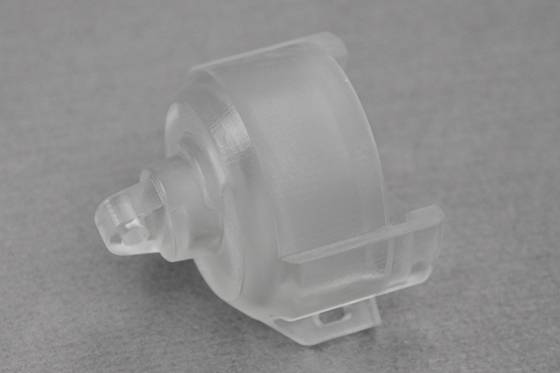
2. Grainy Surface
The final build, although dimensionally accurate, does not have a smooth, shiny surface. In many cases, it may require further surface treatments to meet manufacturing requirements. Competing techniques like Stereolithography have a much better surface finish.
We will discuss some of the popular post-processing methods in the following section that help tackle this issue.
3. Expensive Printers
SLS printers are generally expensive machines. One should expect to spend upwards of $5,000 on cheaper versions. High-end versions are in the $100,000+ range.
It must be noted here, however, that the initial investment is slightly offset by comparatively lower material and printing costs. Additionally, there is a new wave of innovative benchtop 3D printers entering the market that are not as expensive but sport decent specifications. Learn more about 3d printing service costs.
4. Health & Environmental Hazards
SLS material comes in the form of fine powders with a particle size as small as 20 microns. Particles of such minute dimensions can easily enter our respiratory system and create health issues. Sintering can create fumes that can escape the work environment and contribute negatively to the environment.
Operators are recommended to use appropriate PPEs like masks and gloves when dealing with these materials.
Materials Suitable for SLS 3D Printing
Sinterable powdered polymers are the main class of SLS material. Summarized below are some of the main materials falling under this category.
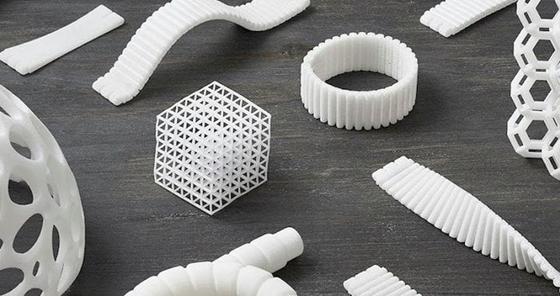
1. PA12
PA 12 is also commonly known as Nylon 12 and Polyamide 12. It has great tensile strength, toughness, and flexibility. PA 12 is also chemical and heat resistant, making it an ideal candidate for functional products.
It has a slightly grainy, matte-like surface after 3D printing. Naturally, it has a white color that can be dyed in other colors conveniently.
2. PA11
Polyamide 11/Nylon 11 is biocompatible, strong, flexible, heat resistant, and chemical resistant. It is known for its isotropic behavior, which is great in certain load-bearing applications like automotive interiors, prosthetics, and medical equipment.
3. Alumide
Alumide is nylon filled with Aluminum powder. This mixture is made for higher strength and stiffness. Moreover, the Aluminum lends its shiny, metallic look to the final product as well, which is not as grainy as a pure Nylon material like PA12 or PA11.
4. PA-CF
Carbon-fiber-filled Nylon is a high-performance combination with elite strength and impact resistance. It is remarkably lightweight, as characteristic of Carbon fiber products. Common applications include jigs, fixtures, and lightweight automotive parts.
Surface Finish Options for SLS Printing Parts
Post-processing was touched upon above but we did not highlight the different techniques experts use. However, the surface finish of depowdered parts is not ideal. So, depending upon the manufacturing requirements, a number of surface treatments can be applied
1. Manual Sanding/Grinding
A slightly finer surface is achievable by the use of manual techniques. Operators use sandpaper of various grades or grinding machines to apply an even surface treatment and to reach all corners of the geometry.
2. Blasting & Tumbling
These methods achieve a great surface finish. For bead blasting, the common media is glass beads, and for tumbling, ceramic chips are widely used. In both cases, these particles are collided with the SLS part’s surface to flatten it out.
However, a downside is that some material is also removed, changing the part dimensions. Moreover, sharp edges may also come out rounded, which may or may not be desirable.
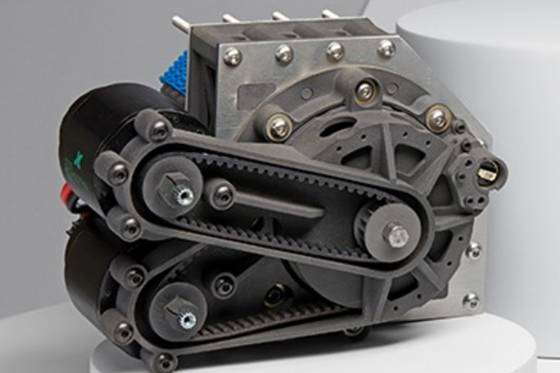
3. Chemical Treatment
Chemicals such as acetone can react with the surface to make it smooth. This is not a popular method but it is viable in some cases. Care should be taken with regard to reactivity while selecting the chemical.
4. Coating
Various coatings can be applied to get specific physical properties. Metallic coatings like gold or copper are sometimes used for added strength and aesthetics. Since 3D printed parts are porous, water-tight coatings like silicone can be applied for enhanced performance.
5. Dyeing / Lacquering
An easy solution to improve surface quality is to apply a coat of paint or lacquer on the rough surface. This enhances the part’s appearance, gives it a shiny feel, and does not take much time.
Applications of SLS 3D Printing
SLS has found application in several important industries owing to its numerous strong points.
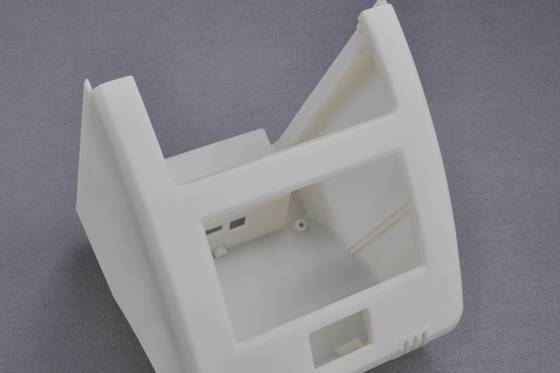
1. Rapid Prototyping & Manufacturing
The mechanical properties of SLS 3D printed parts are comparable to parts manufactured via other processes. However, production is more rapid and convenient. For this reason, SLS parts are widely used for rapid prototyping and manufacturing functional products.
Product developers enjoy the liberty to quickly go through design iterations thanks to the fast printing speed and part functionality.
2. Aviation & Automotive
Both these industries are on the constant lookout for lightweight, impact-resistant parts – characteristic qualities of SLS printing. Therefore, 3D printing is also getting popular for manufacturing customized, stylish parts for retrofitting or decorating automobiles.
Flame-resistant components in aerospace engines are another application where the specific qualities of SLS materials are suitable. In addition to these, it is also popular for making air ducts and prototypes.
3. Medical
In the medical industry, functional, custom-designed prosthetics and orthotics are 3D printed nowadays. This is because 3D scanning technology allows for these parts to be shaped exactly according to the patient’s physique and SLS helps achieve the required mechanical properties.
WayKen's SLS 3D Printing Services
SLS is a popular additive manufacturing technology used by many industries for its precision, accuracy, and productivity. However, mastering the technology can be challenging, so it’s important to work with a reputable service provider who has the experience and expertise to deliver quality results.
WayKen is an ISO-certified rapid prototyping company with a team of experienced engineers who specialize in SLS 3D printing. We offer a fast lead time, competitive pricing, and DFM analysis to help you optimize your projects. When partnering with us for your SLS needs, you can be confident that you’ll receive the highest quality parts and service. Click the button to get an instant quote today!
Conclusion
Selective laser sintering has inarguably made a strong mark on the additive manufacturing landscape in recent years. Its potential and utilization are ever-growing as it catches the eye of more and more industrialists.
To wrap this guide up, we advise our readers to use this guide in their decision-making when opting for 3D printing. It is still a relatively new market and one must be well-informed before finalizing their choice of 3D printing method and manufacturer.
FAQs
What are the types of SLS 3D printers?
SLS 3D printers differ in various ways:
-Size: Desktop printers with a build volume of 100x100x100 mm to high-end industry-grade printers with build volumes as large as 500x500x500 mm.
-Laser Types: SLS printers can be equipped with CO2 laser, fiber laser, infrared laser, or laser diode.
-Printing Specifications: Specifications like printing speed, minimum layer thickness, material capabilities, etc. all differ from product to product.
What’s the difference between selective laser sintering (SLS) printing and selective laser melting (SLM) printing?
SLS joins material particles by sintering them. This process occurs below the material’s melting point and the particles simply fuse into each other. SLM, on the other hand, operates above the melting point and melts the particles completely, which then solidify as a homogenous part.
SLM produces parts with better mechanical properties and is suitable for very high-quality applications. SLS also produces functional parts but is not as strong as SLM.
What materials are commonly used for SLS 3d printing?
Thermoset Polymers and Thermoplastic Polyurethane are common materials used in SLS 3D printing. Specifically, materials like Nylon 12 and Nylon 11 are the most popular ones. Some special applications also utilize a mixture of these with metals (Aluminum) or fibers (Carbon fiber, glass fiber).

